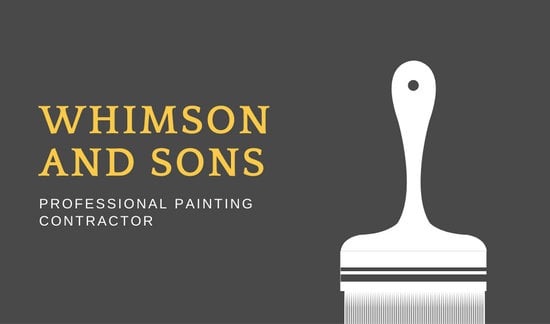Check Out The Effect Of Seasonal Aspects On The Efficiency Of Industrial Exterior Painting And Recognize The Optimum Times To Achieve Enduring Outcomes For Your Project
Check Out The Effect Of Seasonal Aspects On The Efficiency Of Industrial Exterior Painting And Recognize The Optimum Times To Achieve Enduring Outcomes For Your Project
Blog Article
Material Author-Ford Decker
When you're preparing a commercial outside paint job, seasonal variables can make or break your results. You'll intend to consider how temperature level and humidity effect paint application and drying times. Selecting the right season can ensure your paint adheres appropriately and lasts longer. Yet which periods are genuinely the best for this sort of work? Allow's explore the key elements that can influence your task's success.
The Influence of Temperature Level on Paint Application
When you're planning an industrial outside paint job, the temperature level can dramatically affect just how well the paint adheres and dries.
Ideally, you wish to repaint when temperatures range in between 50 ° F and 85 ° F. If straight line 's as well cool, the paint might not treat appropriately, resulting in issues like peeling or splitting.
On the other side, if it's too warm, the paint can dry out too quickly, protecting against appropriate attachment and leading to an irregular finish.
You should additionally consider the moment of day; morning or late afternoon offers cooler temperature levels, which can be a lot more favorable.
Always inspect the supplier's referrals for the certain paint you're making use of, as they often provide support on the suitable temperature level range for optimum results.
Moisture and Its Impact on Drying Times
Temperature level isn't the only environmental aspect that influences your industrial outside painting task; humidity plays a considerable duty too. High humidity degrees can slow down drying times considerably, impacting the total high quality of your paint work.
When the air is filled with dampness, the paint takes longer to cure, which can cause problems like poor bond and a higher danger of mildew development. If Recommended Webpage on a particularly damp day, be planned for extensive delay times between layers.
It's important to monitor local climate condition and strategy as necessary. Ideally, aim for humidity degrees in between 40% and 70% for ideal drying out.
Maintaining these consider mind ensures your project remains on track and provides an enduring coating.
Best Seasons for Commercial Outside Painting Projects
What's the most effective time of year for your commercial external paint projects?
Springtime and very early loss are normally your best options. Throughout these periods, temperatures are moderate, and moisture degrees are commonly reduced, creating suitable conditions for paint application and drying.
Avoid summer's intense heat, which can create paint to dry as well rapidly, bring about inadequate bond and finish. Likewise, wintertime's cold temperatures can impede proper drying out and treating, running the risk of the longevity of your paint job.
Go for days with temperatures in between 50 ° F and 85 ° F for optimum outcomes. Remember to examine the regional weather report for rain, as wet conditions can wreck your task.
Planning around these elements ensures your painting job runs smoothly and lasts much longer.
Conclusion
In conclusion, intending your commercial external painting tasks around seasonal considerations can make a considerable difference in the outcome. By organizing job throughout the excellent temperatures and humidity levels, you'll make certain far better attachment and drying times. Remember to watch on neighborhood weather prediction and pick the correct time of year-- spring and very early loss are your best options. Taking these actions will certainly help you attain a sturdy and specialist coating that lasts.
